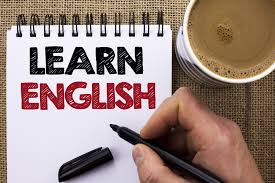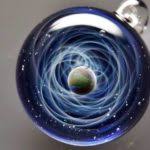DỊCH HOÀN THIỆN ĐỀ THI IELTS READING VÀ GIẢI THÍCH ĐÁP ÁN:
The Life & Work of Marie Curie
Marie Curie is probably the most famous woman scientist who has ever lived. Born Maria Sklodowska in Poland in 1867, she is famous for her work on radioactivity, and was twice a winner of the Nobel Prize. With her husband, Pierre Curie and Henri Raeqiierel, she was awarded the 1903 Nobel Prize for Physics, and was then the sole winner of the 1911 Nobel Prize for Chemistry. She was the first woman to win a Nobel Prize. ĐOẠN 1
Marie Curie có lẽ là nhà khoa học nữ nổi tiếng nhất từng sống. Maria Sklodowska sinh ra ở Ba Lan vào năm 1867, bà nổi tiếng với công trình nghiên cứu về phóng xạ và đã hai lần đoạt giải Nobel. Cùng chồng, Pierre Curie và Henri Raeqiierel, bà đã được trao giải Nobel Vật lý năm 1903, và sau đó là người duy nhất đoạt giải Nobel Hóa học năm 1911. Bà là người phụ nữ đầu tiên đoạt giải Nobel.
From childhood, Marie was remarkable for her prodigious memory, and at the age of 16 won a gold medal on completion of her secondary education. Because her father lost his savings through bad investment, she then had to take work as a teacher. From her earnings, she was able to finance her sister Bronia's medical studies in Paris, on the understanding that Bronia would, in turn, later help her to get an education. ĐOẠN 2
Ngay từ thời thơ ấu, Marie đã nổi tiếng với trí nhớ phi thường, và năm 16 tuổi, bà đã giành được huy chương vàng khi hoàn thành chương trình giáo dục trung học. Vì cha bà mất tiền tiết kiệm do đầu tư không tốt, nên lúc đó bà phải nhận việc làm giáo viên. Từ số tiền kiếm được của mình, bà ấy có thể tài trợ cho việc học y của em gái mình là Bronia ở Paris, hiểu rằng sau này đổi lại Bronia sẽ giúp bà ấy đi học.
In 1891 this promise was fulfilled and Marie went to Paris and began to study at the Sorbonne (the University of Paris). She often worked far into the night and lived on little more than bread and butter and tea. She came first in the examination in the physical sciences in 1893, and in 1894 was placed second in the examination in mathematical sciences .It was not until the spring of that year that she was introduced to Pierre Curie. ĐOẠN 3
Năm 1891, lời hứa này được thực hiện và Marie đến Paris và bắt đầu theo học tại Sorbonne (Đại học Paris). Bà ấy thường làm việc đến tận đêm khuya và chỉ sống nhờ vào một ít bánh mì, bơ và trà. Bà đứng đầu trong kỳ thi khoa học vật lý năm 1893, và năm 1894 được xếp vị trí thứ hai trong kỳ thi toán học. Mãi đến mùa xuân năm đó, bà mới được giới thiệu với Pierre Curie.
far into the night: đến tận khuya
far into the night: late into the night; until very late.
EX: She sat up and read far into the night. The party went on far into the night.
Their marriage in 1895 marked the start of a partnership that was soon to achieve results of world significance. Following Henri BecquereI‘s discovery in 1896 of a new phenomenon, which Marie later called 'radioactivity', Marie Curie decided to find out if the radioactivity discovered in uranium was to be found in other elements. She discovered that this was true for thorium. ĐOẠN 4
Cuộc hôn nhân của họ vào năm 1895 đánh dấu sự khởi đầu của một mối quan hệ đối tác đã sớm đạt được những kết quả có ý nghĩa thế giới. Sau khám phá của Henri BecquereI vào năm 1896 về một hiện tượng mới, mà sau này Marie gọi là 'phóng xạ', Marie Curie quyết định tìm hiểu xem liệu phóng xạ được phát hiện trong uranium có được tìm thấy trong các nguyên tố khác hay không. Bà phát hiện ra rằng điều này đúng với thorium.
Turning her attention to minerals, she found her interest drawn to pitchblende, a mineral whose radioactivity, superior to that of pure uranium, could be explained only by the presence in thorium of small quantities of an unknown substance of very high activity. Pierre Curie joined her in the work that she had undertaken to resolve this problem and that led to the discovery of the new elements, polonium and radium. While Pierre Curie devoted himself chiefly to the physical study of the new radiations, Marie Curie struggled to obtain pure radium in the metallic state. This was achieved with the help of the chemist André-Louis Debierne, one of Pierre Curie's pupils. Based on the results of this research, Marie Curie received her Doctorate of Science, and in 1903 Marie and Pierre shared with Becquerel the Nobel Prize for Physics for the discovery of radioactivity. ĐOẠN 5

1. Mua bộ đề gần 400 bài ielts reading - Dịch và giải chi tiết Chỉ 199k bao gồm toàn bộ đề trong bộ Cambridge ( từ bộ 1 -19) và nhiều đề thi thực tế ( xem danh sách 400 đề ielts reading tại đây). Xem bài mẫu tại đây, Bài mẫu 1, bài mẫu 2, bài mẫu 3. Giải đề bao gồm phần dịch bài đọc, dịch phần câu hỏi, giải thích chi tiết, ( chỉ có thể tải, in phần đề để luyện tập, phần giải chi tiết và dịch chỉ xem online).
>>>>>>> Đặc biệt tặng kèm Dịch và giải chi tiết bộ đề Ielts listening từ Cam 10-18 và tặng kèm hơn 300 đề Ielts thực tế ( không có lời giải chi tiết chỉ có đề và đáp án) ( khác với bộ 400 đề ở trên). Vui lòng điền thông tin theo form tại đây và thanh toán theo thông tin CK trong form.
2. Đặc biệt dành tặng 100 bạn hoàn thành buổi học thử miễn phí khóa học Ielts Speaking online 1 kèm 1, các bạn sẽ được tặng bộ đề 400k bài Ielts reading và bộ đề Ielts Listening bộ Cam từ 10-18 gồm bài dịch và giải chi tiết, giải thích từ vựng khó ( thời hạn sử dụng trong vòng 2 tháng). Xem thông tin khóa học Ielts Speaking online 1 kèm 1 và đăng ký học thử tại đây.
The births of Marie's two daughters, Irene and Eve, in 1897 and 1904 failed to interrupt her scientific work. She was appointed lecturer in physics at the Ecole Nor-male Supérieure for girls in Sevres, France (1900), and introduced a method of teaching based on experimental demonstrations. In December 1904 she was appointed chief assistant in the laboratory directed by Pierre Curie. ĐOẠN 6
The sudden death of her husband in 1906 was a bitter blow to Marie Curie but was also a turning point in her career: henceforth she was to devote all her energy to completing alone the scientific work that they had undertaken. On May 19, 1906, she was appointed to the professorship that had been left vacant on her husband's death, becoming the first woman to teach at the Sorbonne. In 1911 she was awarded the Nobel Prize for Chemistry for the isolation of a pure form of radium. ĐOẠN 7
During World War I, Marie Curie, with the help of her daughter Irene, devoted herself to the development of the use of X—radiography, including the mobile units which came to be known as 'little Curies', used for the treatment of wounded soldiers. In 1918 the Radium Institute, whose staff Irene had joined, began to operate in earnest, and became a centre for nuclear physics and chemistry. Marie Curie, now at the highest point of her fame and, from 1922, a member of the Academy of Medicine, researched the chemistry of radioactive substances and their medical applications. ĐOẠN 8
ln 1921, accompanied by her two daughters, Marie Curie made a triumphant journey to the United States to raise funds for research on radium. Women there presented her with a gram of radium for her campaign. Marie also gave lectures in Belgium, Brazil, Spain and Czechoslovakia and, in addition, had the satisfaction of seeing the development of the Curie Foundation in Paris, and the inauguration in 1932 in Warsaw of the Radium Institute, where her sister Bronia became the director. ĐOẠN 9
One of Marie Curie's outstanding achievements was to have understood the need to accumulate intense radioactive sources not only to treat illness but also to maintain an abundant supply for research. The existence in Paris at the Radium Institute of stock of grams of radium made a decisive contribution to the success of the experiments undertaken in the years around 1930. This work prepared the way for the discovery of the neutron by Sir James Chadwick and, above all, for the discovery in 1934 by Irene and Frédéric Joliot- Curie of artificial radioactivity. A few months after this discovery, Marie Curie died as a result of leukaemia caused by exposure to radiation. She had often carried test tubes containing radioactive isotopes in her pocket, remarking on the pretty blue-green light they gave off. ĐOẠN 10
Her contribution to physics had been immense, not only in her own work, the importance of which had been demonstrated by her two Nobel Prizes, but because of her influence on subsequent generations of nuclear physicists and chemists. ĐOẠN 11
>>>>> Xem thêm:
♦ Tổng hợp câu trả lời, câu hỏi, từ vựng của hơn 70 chủ đề Ielts Speaking part 1
♦ Tổng hợp gần 400 đề thi Ielts reading ( bao gồm dịch, giải chi tiết, từ vựng)
Questions 1-6
Do the following statements agree with the information given in Reading Passage 57?
In boxes 1-6 on your answer sheet. write
TRUE it the statement agrees with the information
FALSE if the statement contradicts the information
NOT GIVEN if there is no information on this
1. Marie Curie's husband was a joint winner of both Marie‘s Nobel Prizes.
2. Marie became interested in science when she was a child.
3. Marie was able to attend the Sorbonne because of her sister’s financial contribution.
4. Marie stopped doing research for several years when her children were born.
5. Marie took over the teaching position her husband had held.
6. Marie‘s sister Bronia studied the medical uses of radioactivity.
Question 7-13
Complete the notes below
Choose ONE WORD from the passage for each answer
Write your answers in boxes 7-13 on your answer sheet.
Marie Curie's research on radioactivity
When uranium was discovered to be radioactive. Marie Curie found that the element called 7 ........................ had the same property.
Marie and Pierre Curie‘s research into the radioactivity of the mineral known as 8 ........................ led to the discovery of two new elements.
In 1911, Marie Curie received recognition for her work on the element 9 ........................
Marie and Irene Curie developed X-radiography which was used as a medical technique for 10 ........................
Marie Curie saw the importance of collecting radioactive material both for research and for cases of 11 ........................
The radioactive material stocked in Paris contributed to the discoveries in the 1930s of the 12 ........................ and of what was known as artificial radioactivity.
During her research. Marie Curio was exposed to radiation and as a result, she suffered from 13 ........................
ĐÁP ÁN, GIẢI CHI TIẾT và DỊCH HOÀN THIỆN ĐỀ THI IELTS READING:
The Life & Work of Marie Curie
Questions 1-6
Do the following statements agree with the information given in Reading Passage 57?
In boxes 1-6 on your answer sheet. write
TRUE it the statement agrees with the information
FALSE if the statement contradicts the information
NOT GIVEN if there is no information on this
1.F Marie Curie's husband was a joint winner of both Marie‘s Nobel Prizes.
Chồng của Marie Curie là người chiến thắng chung cả giải thưởng Nobel của Marie
Giải thích: đoạn 1
With her husband, Pierre Curie and Henri Raeqiierel, she was awarded the 1903 Nobel Prize for Physics, and was then sole winner of the 1911 Nobel Prize for Chemistry. She was the first woman to win a Nobel Prize
2.NG Marie became interested in science when she was a child.
Marie trở nên quan tâm về khoa học khi còn là một đứa trẻ
Giải thích: đoạn 2, ko đề cập thông tin trong bài
From childhood, Marie was remarkable for her prodigious memory, and at the age of 16 won a gold medal on completion of her secondary education.
Question 7-13
Complete the notes below
Choose ONE WORD from the passage for each answer
Write your answers in boxes 7-13 on your answer sheet.
Marie Curie's research on radioactivity
Nghiên cứu về phóng xạ của Marie Curie
When uranium was discovered to be radioactive. Marie Curie found that the element called 7 ....... thorium................. had the same property.
Khi uranium được khám phá là phóng xạ, Marie Curie đã thấy rằng nguyên tố gọi là thorium có cùng đặc tính
Giải thích: đoạn 4
Following Henri BecquereI‘s discovery in 1896 of a new phenomenon, which Marie later called 'radioactivity', Marie Curie decided to find out if the radioactivity discovered in uranium was to be found in other elements. She discovered that this was true for thorium.
---------------------------------------------------------------------------------------------------------------------------------------------------------------------------
Marie and Pierre Curie‘s research into the radioactivity of the mineral known as 8 .....pitchblende................... led to the discovery of two new elements.
Nghiên cứu của Marie và Pierre Curie về phóng xạ của khoáng chất có tên là pitchblende dẫn đến khám phá về hai nguyên tố mới.
Giải thích: đoạn 5
Tuming her attention to minerals, she found her interest drawn to pitchblende, a mineral whose radioactivity, superior to that of pure uranium, could be explained only by the presence in thorium of small quantities of an unknown substance of very high activity. Pierre Curie joined her in the work that she had undertaken to resolve this problem and that led to the discovery of the new elements, polonium and radium.
Answer:
1. FALSE
2. NOT GIVEN
3. TRUE
4. FALSE
5. TRUE
6. NOT GIVEN
7 thorium
8. pitchblende
9. radium
10. soldiers
11. illness
12. neutron
13. leukaemia/leukemia
1. Mua bộ đề gần 400 bài ielts reading - Dịch và giải chi tiết Chỉ 199k bao gồm toàn bộ đề trong bộ Cambridge ( từ bộ 1 -19) và nhiều đề thi thực tế ( xem danh sách 400 đề ielts reading tại đây). Xem bài mẫu tại đây, Bài mẫu 1, bài mẫu 2, bài mẫu 3. Giải đề bao gồm phần dịch bài đọc, dịch phần câu hỏi, giải thích chi tiết, ( chỉ có thể tải, in phần đề để luyện tập, phần giải chi tiết và dịch chỉ xem online).
>>>>>>> Đặc biệt tặng kèm Dịch và giải chi tiết bộ đề Ielts listening từ Cam 10-18 và tặng kèm hơn 300 đề Ielts thực tế ( không có lời giải chi tiết chỉ có đề và đáp án) ( khác với bộ 400 đề ở trên). Vui lòng điền thông tin theo form tại đây và thanh toán theo thông tin CK trong form.
2. Đặc biệt dành tặng 100 bạn hoàn thành buổi học thử miễn phí khóa học Ielts Speaking online 1 kèm 1, các bạn sẽ được tặng bộ đề 400k bài Ielts reading và bộ đề Ielts Listening bộ Cam từ 10-18 gồm bài dịch và giải chi tiết, giải thích từ vựng khó ( thời hạn sử dụng trong vòng 2 tháng). Xem thông tin khóa học Ielts Speaking online 1 kèm 1 và đăng ký học thử tại đây.

.png)

.jpg)




